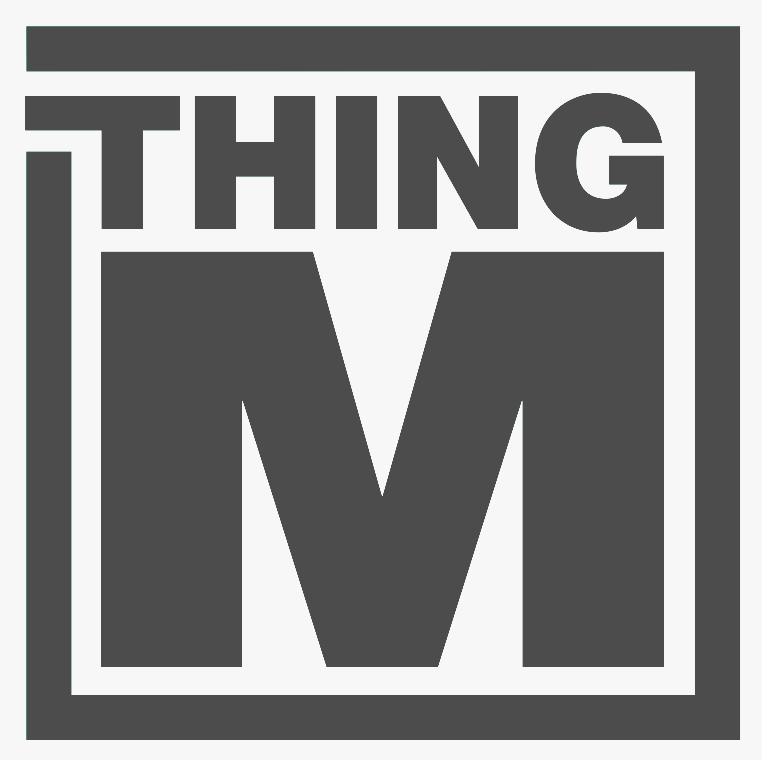ThingM Newsletter for August 26, 2010
/CONTENTS - Welcome Hot Solder UK!
- New Data Sheet for BlinkM/MaxM/MinM
- Did you know that BlinkMs takes sensor input with no microcontroller?
- Sketching in Hardware 2010: a recap
- Appearances
- Unsubscribe
WELCOME HOT SOLDER UK
++++++++++++++++++++++++++++++++++++++++++++++++++++++
We are pleased to announce our latest distributor: Hot Solder UK, based in the historic city of Exeter in Devonshire County, England. Wikipedia lists it as "the most south-westerly Roman fortified settlement in Britain" and "one of the top ten most profitable locations for a business to be based." There's also a pun to be made about the town's location on the river Exe and Microsoft filename extensions, but we're working very hard not to make it. ;-)
We are very pleased to have Hot Solder as one of our distributors. They currently have BlinkMs, LinkMs and MaxMs in stock.
NEW DATA SHEET FOR BLINKM/MAXM/MINM
++++++++++++++++++++++++++++++++++++++++++++++++++++++
We updated our BlinkM data sheet to include all three variants, including special sections on physical specifications for all three products, detailed information about how they vary, and updated specs (the new MaxMs are 18% more blindingly bright than the old ones, and MinMs can have fade times as long as 227 days--yes, days--for example).
You can download it here:
http://thingm.com/fileadmin/thingm/downloads/BlinkM_datasheet.pdf
BLINKMS CAN ACT ON SENSOR INPUT WITH NO CONTROLLER. REALLY? YES!
++++++++++++++++++++++++++++++++++++++++++++++++++++++
In many cases, BlinkMs can be interactive with no external hardware or microcontroller. Every BlinkM can change its behavior using its own inputs.
BlinkM MaxMs have analog inputs that read values from GND to +5v and can change either change brightness or color based on that input, which can be a simple potentiometer, or any sensor that can be made to output up to 5 volts (these are often called 5V TTL-compatible outputs). There are bend sensors, passive infrared sensors, tilt sensors. Thousands of TTL sensors can be directly connected to BlinkMs and used as inputs to switch between built-in scripts.
BlinkM MinMs and recent (firmware version {‘a’,’d’} and above) BlinkMs have digital input capabilities. This capability makes it very easy to directly connect a button, a switch or a simple binary sensor and change between behaviors.
Direct input makes it much easier to create sophisticated reactive lighting effects using very little additional hardware, since the BlinkM will handle most of the input work for you.
For more info and example code, see sections 3.4 and 4.5 in our new data sheet for information on input commands (which are "Knob Read RGB", " Knob Read HSB", "Jump, relative", "Input Read & Jump", and "Input Jump Immediate"). And yes, for those keeping track, we HAVE introduced the equivalent of GOTO into the command set. ;-)
http://thingm.com/fileadmin/thingm/downloads/BlinkM_datasheet.pdf
You can upload scripts that use the new commands to BlinkMs with the BlinkMScriptTool for Arduino and BlinkMScriptTool2 for LinkM (both written in Processing).
You can find the source to BlinkMScriptTool here:
And BlinkMScriptTool2:
SKETCHING IN HARDWARE: A RECAP
++++++++++++++++++++++++++++++++++++++++++++++++++++++
Mike organized and ThingM sponsored the fifth annual Sketching in Hardware meeting this year in LA. A group of 40 toolkit builders, educators, manufacturers and users met and talked (and talked…and talked...) about how to use electronics as a creative medium.
As in years past, we were flattered at the fantastic group of folks who accepted our invitation and traveled from all over the world for the event.
Some of the awesome new technologies shown at Sketching included:
Phil Van Allen's NETLab Toolkit: http://www.netlabtoolkit.org/
Shigeru Kobayashi's physical.wonderfl online hardware IDE: http://physical.wonderfl.net/index_en.html
Ed Baafi's ModKit, another online IDE for visually programming Arduinos: http://www.modk.it/
Jason K. Johnson's Firefly, which connects the Arduino with the Grasshopper generative architecture environment: http://www.grasshopper3d.com/profile/firefly
Nwanua Elumeze showed the ingenious Schemer online IDE and light sensor programming system: http://www.aniomagic.com/schemer/help.php
Rob Faludi demoed his ZigBee Internet Gateway: http://www.faludi.com/projects/zigbee-internet-gateway/
Others presented about how lightweight physical computing tools are being adopted by everyone from middle school children to dancers and climate scientists.
The presentations from many of the attendees are downloadable here:
http://www.sketching10.com/presentations/
The event itself was held in the historic, and awesome, LAX Theme Building, and at Art Center College of Design's equally awesome Wind Tunnel building. Here's a history and profile of the Theme Building from Wikipedia:
http://en.wikipedia.org/wiki/Theme_Building
You can find photos from the event on Flickr:
http://www.flickr.com/search/?q=%23sketching2010
APPEARANCES
++++++++++++++++++++++++++++++++++++++++++++++++++++++
August 28: Come to Crash Space LA, the hacker space Tod co-founded, for a fundraiser and demo of the secret Hackerspace Challenge product that Crash Space has been working on! More info: http://bit.ly/ajifDn
September 14: Mike will be part of a group of folks giving the closing keynote--a tribute to Mark Weiser--at Appnation in San Francisco: http://www.appnationconference.com/csch.php
September 23: Mike will be on a panel discussion of Open Hardware business models at the Open Hardware Summit: http://www.openhardwaresummit.org/
September 30: Mike will be talking about frameworks for the design of devices and services at Mobilize 10 in San Francisco: http://events.gigaom.com/mobilize/10/


